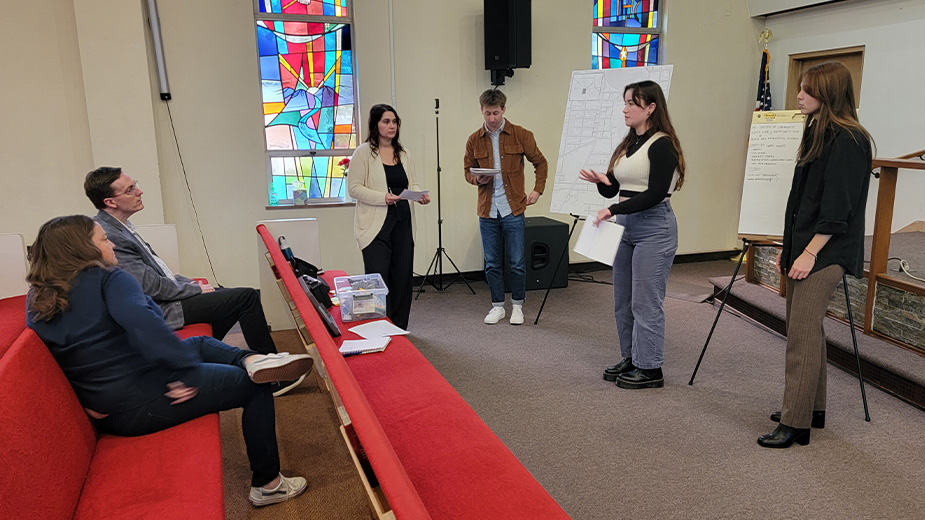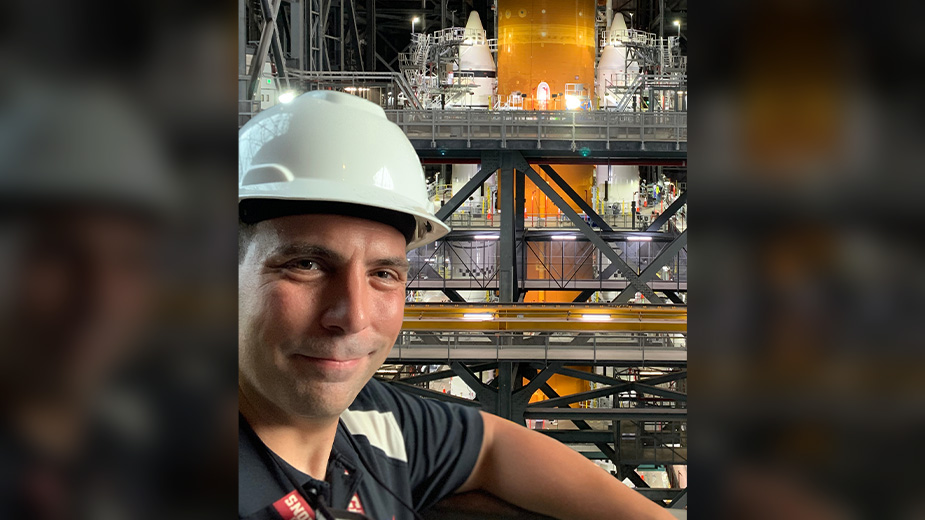To Preserve a Neighborhood, Know Its Heritage
WARREN, Ohio – Kent State University students involved in a project to develop ideas to revitalize a portion of Warren’s southwest side must consider ways to connect the area to the rest of the city while preserving its proud heritage, according to those who attended a meeting about the project.
The Oct. 9 community meeting at Second Baptist Church in Warren marked the second visit to the city by a group of Kent architecture students. The 16 third-year students, in Bill Willoughby’s class in KSU’s College of Architecture and Environmental Design, are devising plans to revitalize portions of the Quinby and Jefferson neighborhoods. The area is bordered by the Mahoning River and state Route 45 (Tod Avenue).
“We are having a facilitated conversation with the neighborhood to see what kinds of needs and aspirations the neighborhood has,” the associate professor says.
For about six weeks, the students have been doing research to understand the neighborhood. The class is looking at this particular neighborhood because of its proximity to Lordstown, the river and downtown.
Willoughby says the students are looking for ways to better connect the area regarding traffic and transportation. They’re exploring ways to engage institutions such as schools, social serv-ice agencies and churches “to improve the community from the inside.”
The project is an important endeavor for the Kent students because during the junior year, they look at the external factors that affect buildings. That includes land and social conditions that make buildings possible.
“We want to look at the geography of the land. Its natural geography. But its social geography too,” Willoughby says. “We want to do that in a way where we look at the large scale of a city, where we can look at a neighborhood and we can look at a site. In the end, these students will be developing an area plan that hopefully will be of value to the community.”
One of the things the students found is that the neighborhood is between a food swamp – food is available but it’s mostly of the unhealthful variety – and a food desert – where there isn’t easy access to food.
Food and food access are being explored as the students develop their plan. They’re also looking at mental health, social services, education and job training and at property vacancies.
“We see Warren as an economically growing place and what does that mean for the community and how can it participate with that,” Willoughby says. Housing, or what one community member called “a lack of desirable housing,” is another challenge for the neighborhood which historically has been disenfranchised, Willoughby says.
Community members who attended the Oct. 9 afternoon gathering represented community organizations. Willoughby expects to schedule another meeting in the evening in the next few weeks.
The Rev. Todd Johnson, pastor of Second Baptist Church, A House of Hope, says it’s essential during this transitional time for the city to reimagine the southwest side’s place in Warren’s overall structure. That also means making long overdue investments to benefit the neighborhood residents so they can be a part of the burgeoning industry, says Johnson who is also 1st ward councilman.
The historical makeup of the neighborhood is one element about which the KSU students should be aware, the pastor says. It was composed of hard working, largely African-American or immigrant families who worked in the steel mills or automotive plants in the region.
The effort should look for ways to “reinvigorate that population as opposed to replace,” Johnson says.
Students should also be cognizant of people’s fear of gentrification and replacement.
“We’ve seen it in many, especially historically African American, communities. That is going to be a constant issue of concern for us,” Johnson says. “Will this development be for us or for someone else and inaccessible to us?”
How the neighborhood can be an integral part of the rest of the city and the region and not an outlier is also something that merits consideration, he says.
Residents want a return to a community feel with community spaces, the pastor says.
“That could mean a community center, a park or green space or areas where residents can gather together and reestablish that sense of historic community,” he says.
Marvin Logan Jr.’s interest in the project is twofold. He grew up and lives in the neighborhood and he’s a Kent graduate.
“I think one of the critical things for the students to know about this community is the depth and the passion of its people,” says Logan, who is the executive director of Oh Wow! Children’s Center in Youngstown. “This is a community that is rich in history. There are many individuals who have gone on and done great things.”
Sometimes when people think about the city, they think about its economically challenged residents rather than the doctors, lawyers, judges, machinists and carpenters who grew up there and contributed to their professions, he says.
“There’s a lot of history and culture here and there’s something to build from,” Logan says. “This community is not a blank canvas. Its people are not a blank canvas. We have an opportunity to do something that’s going to be worth a lot of good.”
The best way for others to understand what people in the community want and don’t want for their neighborhood is for them to get out in the community and talk to people, he says.
“The most important thing for the students to keep top of mind in terms of an area of concern is understanding the historical divestment from this community,” Logan says. “Whether that is environmental damage from industry or redlining from the banking community – understanding how it came to be what it is today,” Logan says.
Abbey McElhaney is one of the Kent students involved in the project.
“We came with some expectations of just listening, hearing everyone out,” she says. “Speaking a lot with Marvin [Logan] from my group, we got a lot
of history, a lot of insight into what it feels like to be part of this community. He is someone who has left and come back and feels strongly about the growth and the potential this community has.”
McElhaney, who’s from the Pittsburgh area, believes the meeting served to energize her and her classmates and provided a new outlook on their projects.
Moving forward, she and her classmates will think about what they heard from those at the meeting and determine the best way to approach the community.
Surveys, which may be completed on paper or online, were left at the church for residents.
Following the evening community meeting in a few weeks, the Kent students and their professor will return in December to present their ideas for the project.
Pictured at top: Representatives from community organizations and Kent State University architectural students gathered at Second Baptist Church, A House of Hope, in Warren on Oct. 9 to talk about the Quinby and Jefferson neighborhoods of the city. The KSU architectural students are developing design suggestions to revitalize the area.
Copyright 2024 The Business Journal, Youngstown, Ohio.



